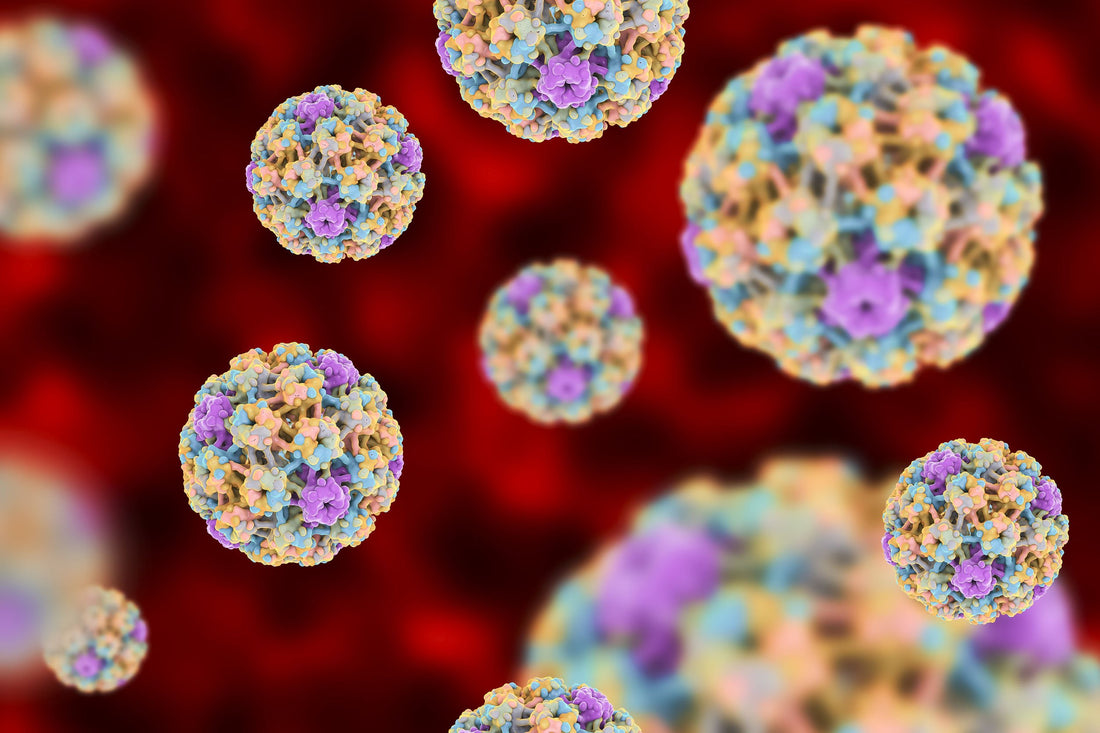
Real causes of HPV in females
HPV (Human Papilloma Virus)
It’s a group of about 200 virus types, some among which causes a disease condition mentioned by the name itself ‘The HPV’.
HPV is a sexually transmitted infection which can be categorised based on the pathogen as,
- Low-risk HPVs which mostly cause no disease. However, a few low-risk HPV types can cause warts on or around the genitals, anus, mouth, or throat.
- High-risk HPVs which can cause several types of cancer. There are about 14 high-risk HPV types including HPV 16, 18, 31, 33, 35, 39, 45, 51, 52, 56, 58, 59, 66, and 68. Two of these, HPV16 and HPV18, are responsible for most HPV-related cancers.
Symptoms of HPV
Most common symptoms of HPV are;
Warts: Warts are noncancerous (benign) rough bumps that form on the skin. They develop the Human papillomavirus, or HPV, enters a cut or break in the skin and causes an infection.
Types of warts are;
Genital warts
Flat warts
Plantar warts
Common warts
The genital warts are most commonly caused by HPV infection. They are mainly found at cervix, vagina, groins, and around male genitalia as well.
There are other symptoms also including pain, itching, exudations, etc depending on the virus type.
Complications
Most of the HPV infections are symptom-less and remain untreated. They are encountered by our own body's immune system mostly. The infections which overcome the immune system attack and still remain untreated can lead to even mortal conditions such as cancers.
The most common HPV related cancers are;
- Cervical cancer
- Vaginal cancer
- Vulvar cancer
- Oropharyngeal cancer
- Penile cancer
Causative factors
Studies have established that women have a higher biological risk for acquiring STIs than men. Also, there is a higher transmission probability from men to women than vice versa.
Women are biologically more vulnerable to STDs than men. Women are more susceptible to STDs during sexual intercourse because the vaginal surface is larger and more vulnerable to sexual secretions than the primarily skin-covered penis. Also, the volume of potentially infected male ejaculate deposited in a woman’s vagina during intercourse is larger than the potentially infected cervical and vaginal secretions to which men are exposed.
STDs in women tend to go untreated because they are often asymptomatic. As already noted, an untreated STD increases susceptibility to complications.
Because of childbirth complications and post-childbirth anaemia, women sometimes receive blood transfusions after delivery. Receiving transfused blood from places where the blood supply is not tested for infection puts women at risk of STDs transmitted via blood.
Looking into the common modes of HPV transmission, we can see that HPV can be accrued by having vaginal, oral, or anal sexual contact with an infected person. The person may or may not exhibit any symptoms. Among them, the most common ways being vaginal and anal methods.
When the sexual contact occurs, the virus spreads not only through the vaginal secretions; but even through skin-to-skin direct contact. Warts can spread through just a simple touch.
If you are sexually active, you can get HPV, even if you have had sex with only one person. You can also develop symptoms years after having sex with someone who has the infection. This makes it hard to know when you first got it.
The route of HPV transmission is primarily through skin-to-skin or skin-to-mucosa contact. Sexual transmission is the most documented, but there have been studies suggesting non-sexual courses.
The horizontal transfer of HPV includes fomites, fingers, and mouth, skin contact (other than sexual, self-inoculation is described in studies as a potential HPV transmission route, as it was certified in female virgins, and in children with genital warts (low-risk HPV) without a personal history of sexual abuse.
Vertical transmission from mother to child is another HPV transfer route. Several studies have emphasized the possibility of infection through the amniotic fluid, or the placenta, or via contact with maternal genital mucosa during natural birth.
Waterborne transmission of HPV has never been demonstrated; however, HPV DNA has been detected in water environments.
Routine hygiene measures are proven to be inefficient in preventing HPV transmission, as the studies which have evaluated samples of HPV on contaminated medical equipment (after standard disinfection) have found them to be still positive.
Diagnosis
- Vinegar (acetic acid) solution test- A vinegar solution applied to HPV-infected genital areas turns them white. This may help in identifying difficult-to-see flat lesions.
- Pap test- Your doctor collects a sample of cells from your cervix or vagina to send for laboratory analysis. Pap smear tests can reveal abnormalities that can lead to cancer.
- DNA test- This test, conducted on cells from your cervix, can recognize the DNA of the high-risk varieties of HPV that have been linked to genital cancers. It's recommended for women 30 and older in addition to the Pap test.
- Colposcopy and acetic acid test-
Colposcopy is a procedure performed by specially trained clinicians as an outpatient procedure using a low-powered microscope, the colposcope. Colposcopy is the examination of the cervix, vagina, and in some instances, the vulva after the application of acetic acid solution; coupled with obtaining colposcopically directed biopsies of all lesions suspected of representing neoplasia. Colposcopic findings are graded according to the degree of lesion, surface contour, mosaic pattern, and punctuation. Greater abnormalities of these parameters are related to severity of the lesions.
- Biopsy
Colposcopy allows tissue sampling (biopsy) that is targeted to the abnormal areas. In fact, the biopsy of abnormal areas is a critical part of colposcopy because treatment will depend on how severe the abnormality is on the biopsy sample. If the biopsy results show pre-cancer (dysplasia) or cancer, then treatment is recommended. The dysplasia may be mild, moderate, or severe.
Excisional biopsy is recommended when colposcopic appearances indicate high grade abnormality, when low grade colposcopic change is associated with severe dyskaryosis or worse, or when a lesion extends into the canal.
In genital warts, the most characteristic feature is the presence of koilocytes, which are mature squamous cells with a clear perinuclear zone. The nuclei of koilocytes may be enlarged and hyper chromatic, double nuclei are seen often as well.
Prevention
Most of the HPV infections can affect almost all sexually active individuals. And most of them remains asymptomatic. However, they can be prevented to a small extent by,
- Vaccination.
- Avoiding skin to skin direct contact with infected person.
- Use of condoms and dental dams during sexual intercourse also prevents HPV but not completely as it doesn’t cover the skin over the genital area completely.
Treatment.
There is no treatment for the virus itself. However, there are treatments for the health problems that HPV can cause:
- Genital warts can be treated by your healthcare provider or with prescription medication. If left untreated, genital warts may go away, stay the same, or grow in size or number.
- Cervical precancer can be treated. Women who get routine Pap tests and follow up as needed can identify problems before cancer develops. Prevention is always better than treatment.
- Other HPV-related cancers are also more treatable when diagnosed and treated early. Treatments such as chemotherapy, surgery, palliative treatments are to be done when the condition advances to cancerous stage.
About Basant
To avoid such complicated treatments with adverse effects, we have a good option of ayurvedic treatment. HPV Basant our new product will be an innovative contribution in this scenario. Most effective ayurvedic medicines are compounded and designed in an encapsulated form, to be more result-oriented and user-friendly. It can be administered as a vaginal suppository.
HPV Basant cream will also be launched soon, for more result and convenience.

